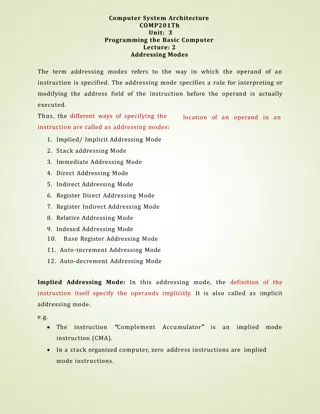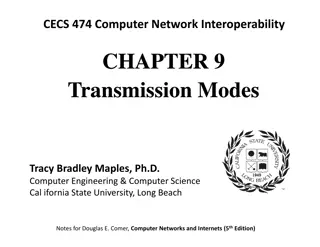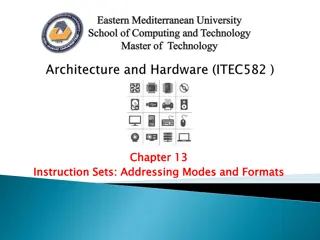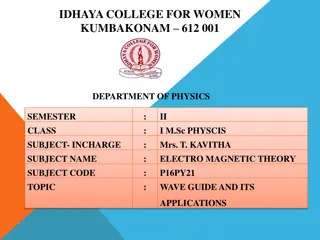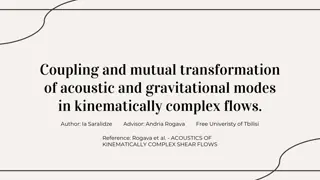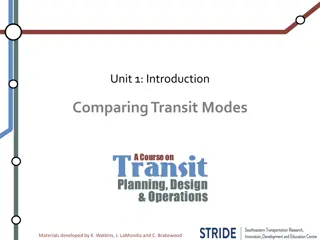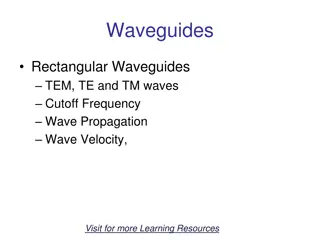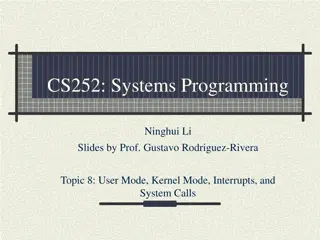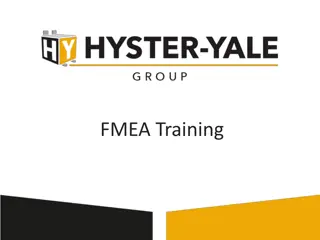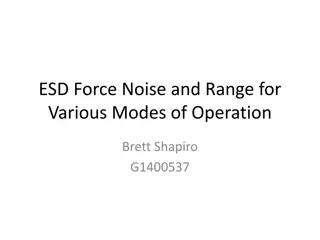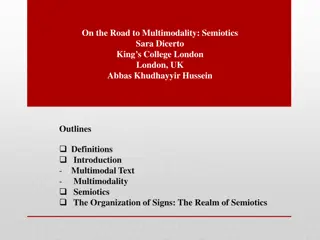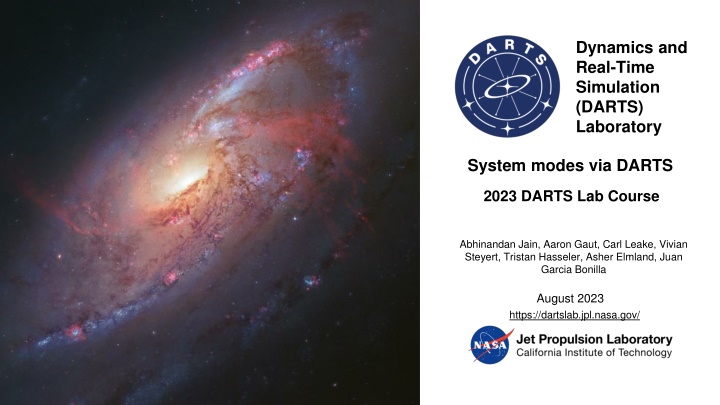
Recovering System Modes: DARTS Laboratory System Overview
Dive into the innovative approach of the DARTS Laboratory System in recovering system modes under configuration changes. Discover how DARTS simplifies the process, providing dense system-level coverage efficiently, without the need for multiple FEM snapshot models. Explore the verification process and the studies on configuration changes for flexible body modeling using DARTS.
Download Presentation

Please find below an Image/Link to download the presentation.
The content on the website is provided AS IS for your information and personal use only. It may not be sold, licensed, or shared on other websites without obtaining consent from the author. If you encounter any issues during the download, it is possible that the publisher has removed the file from their server.
You are allowed to download the files provided on this website for personal or commercial use, subject to the condition that they are used lawfully. All files are the property of their respective owners.
The content on the website is provided AS IS for your information and personal use only. It may not be sold, licensed, or shared on other websites without obtaining consent from the author.
E N D
Presentation Transcript
Dynamics and Real-Time Simulation (DARTS) Laboratory System modes via DARTS 2023 DARTS Lab Course Abhinandan Jain, Aaron Gaut, Carl Leake, Vivian Steyert, Tristan Hasseler, Asher Elmland, Juan Garcia Bonilla August 2023 https://dartslab.jpl.nasa.gov/ https://dartslab.jpl.nasa.gov/
Topics overview 1. Introduction 2. Single flexible body modeling 3. FModal FEM/DARTS bridge 4. Flexible multibody systems in DARTS 5. Time domain simulations 6. Recovering system modes with configuration changes 7. Servo-elastic effects 8. Wrap up 2
Recap: Workflow for recovering system modes under configuration changes The G&C system cares about the system-level behavior. Under configuration changes, the state-of-practice has been to get multiple FEM snapshot models of the system to obtain some level of coverage of the configuration space. However, DARTS can do this more easily. Use FEM model data for the DARTS component bodies. The component bodies are constant (small deformation, low change in mass properties, etc.) as opposed to the parts that are variable: joints, bodies that change mass noticeably, etc. Let DARTS generate the full nonlinear system-level model based on the component bodies: a model that is valid across the configuration space. Use DARTS built-in linearization process to extract the system-level linearized models for a broad range of configurations. constant This procedure eliminates the need to get multiple system-level NASTRAN FEM data for at best sparse system-level coverage. Instead, we get component data once, and use DARTS to get dense system-level coverage. 3
DARTS system models verification and demonstration We have proposed an approach for building the flexible body model using: Specific choice of modes FModal A-sets Residual models Modal integrals DARTS for the flexible dynamics model Now we proceed to demonstrate that this process does allow us to recover system modes via DARTS over a large configuration space. 4
Verification process Use FModal to generate modal data for component flexible bodies to build up a DARTS flexible body model. Make configuration changes within DARTS and compute system modal data. In parallel, develop and use NASTRAN to create snapshot linear models at these different configurations and also compute modal data. Compare the mode shapes and frequencies from the two paths and verify that they agree. 5
Configuration changes studies The vehicle configuration changes that will be examined will include: Large articulation Mass property changes of rigid bodies Attachment/detachment of bodies 6
System level modes The component level mode shapes are designed to give the correct modal frequency and shapes for the component bodies, provided that the joints are on nodes that are included in the a-set. Note that joints don't have to exist, i.e., you can include a node in the a-set, but not put a joint there and still have the correct component modes. This derivation is done irrespective of the joint angle(s). This means we should maintain the correct mode shapes as we articulate the joint, i.e., we can have large joint articulation and still get the correct mode shapes. Similarly, we should be able to modify the mass properties and attach/detach bodies and still maintain the correct mode shapes for the component bodies. Provided the component bodies have "enough" modes included, we will be able to get the correct system-level mode shapes. "Enough" here is not well defined and is a value that must be chosen for each component body in the system. 7
Articulation F-FlexDynamics/15-LargeArticulationModalAnalysis 8
Mass property changes F-FlexDynamics/13-MassPropertyChangeModalAnalysis 9
Attachment and detachment F-FlexDynamics/12-AttachDetachModalAnalysis 10
Thank you for your attention. Any questions? 11


